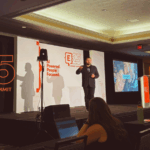Building a great team through the hiring process can feel overwhelming. In the last year, finding the right people for our university team has been challenging due to the competitive job market in academia. In a tight labor market, employing effective hiring techniques can significantly enhance the likelihood of attracting and selecting the most qualified candidates for our university’s roles.
Since January 2023, my team and I have interviewed, hired and onboarded a dozen new employees. During that time, my directors and I screened more than 300 applications, conducted more than 100 Zoom and in-person interviews and offered positions to more than 20 candidates. Here are four lessons we have learned during this marathon of hiring.




